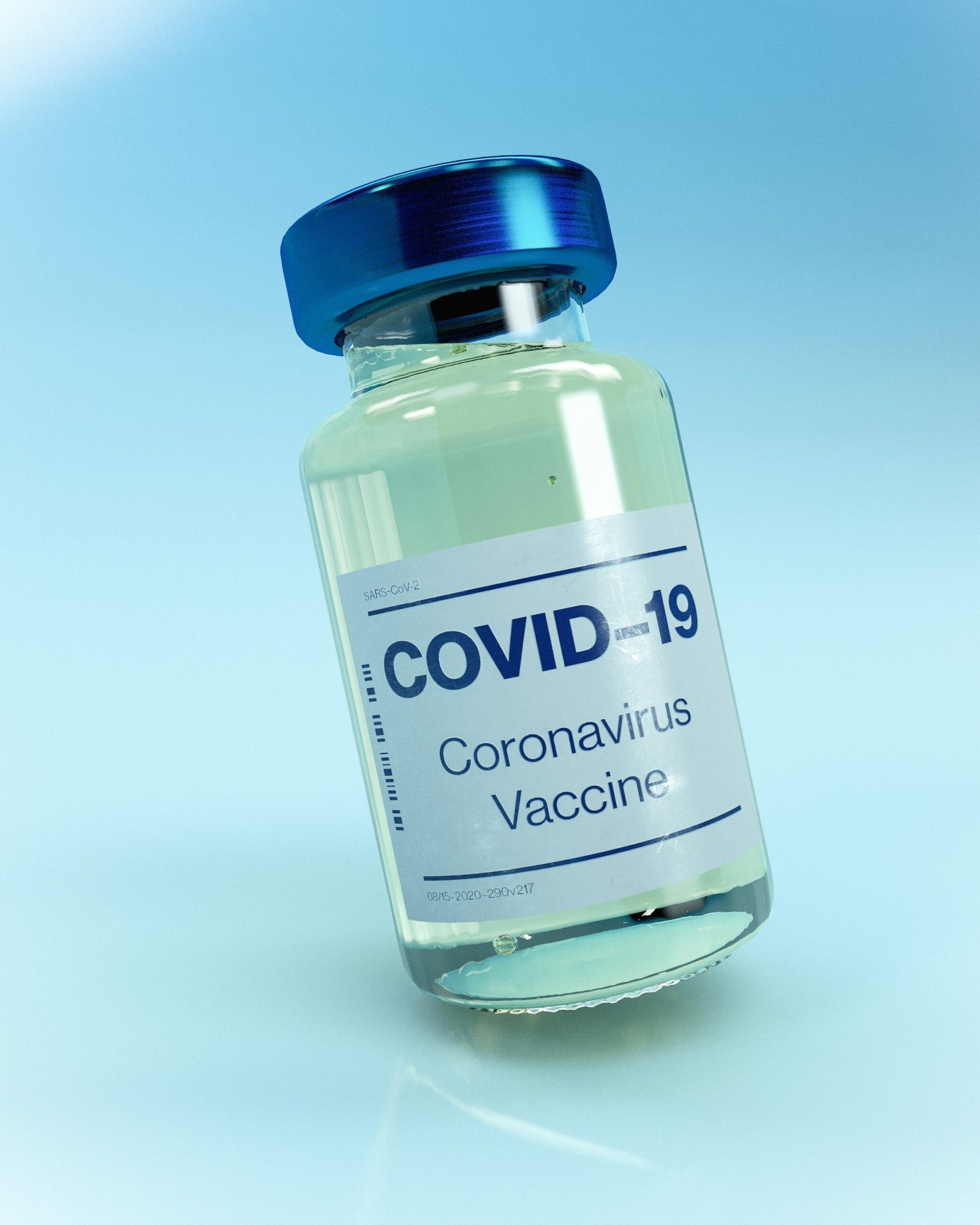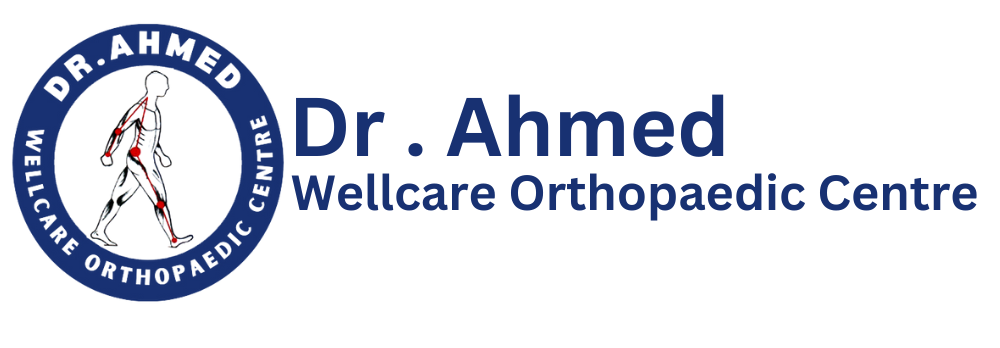Introduction to Orthopaedic Disorders
Orthopedic disorders encompass a wide range of conditions affecting the musculoskeletal system, including the bones, joints, muscles, ligaments, and tendons. These disorders are often characterized by pain, stiffness, inflammation, and reduced mobility, which can significantly impact an individual’s quality of life. Common orthopedic conditions include arthritis, fractures, and soft tissue injuries, each requiring specific approaches to diagnosis and treatment. Arthritis, for instance, is a degenerative joint disease characterized by inflammation and pain, while fractures involve the breaking of bones due to excessive force or impact. Soft tissue injuries, such as sprains and strains, often result from overuse or acute trauma to muscles and ligaments.
Addressing orthopedic disorders is crucial as they can lead to chronic pain, physical disability, and a decrease in the ability to perform everyday activities. These conditions are particularly prevalent among older adults, athletes, and individuals with physically demanding jobs. Effective management of orthopedic disorders can thus enhance patients’ mobility, reduce pain, and improve overall functionality. Early diagnosis and timely intervention are key to preventing the progression of these conditions and maintaining a healthy musculoskeletal system.
The importance of treating orthopedic disorders cannot be overstated, as they play a significant role in the overall well-being of individuals. Advancements in both surgical and non-surgical methods have provided a broad spectrum of treatment options tailored to the specific needs of patients. Understanding the nature and impact of orthopedic disorders sets the stage for exploring these comprehensive approaches, which aim to restore function, alleviate pain, and enhance patients’ quality of life. As we delve into the various methods available, it is essential to recognize the diverse nature of these disorders and the individualized care required to address them effectively.
Non-Surgical Treatments: Medications
In the management of orthopedic disorders, medications play a crucial role in alleviating symptoms, reducing inflammation, and controlling long-term disease progression. Among these, pain relievers, anti-inflammatory drugs, corticosteroids, and disease-modifying medications are commonly prescribed.
Pain relievers, also known as analgesics, are often the first line of defense in treating orthopedic conditions. Over-the-counter options such as acetaminophen can provide temporary relief from mild to moderate pain. For more severe pain, stronger prescription opioids like oxycodone or morphine may be used, albeit with caution due to their potential for dependency.
Anti-inflammatory medications, particularly non-steroidal anti-inflammatory drugs (NSAIDs), such as ibuprofen and naproxen, are frequently used to reduce joint inflammation and pain. These medications work by inhibiting the enzymes that cause swelling and discomfort in the joints, providing relief to patients suffering from arthritis and other inflammatory conditions.
Corticosteroids, either taken orally or injected directly into the affected joint, are powerful anti-inflammatory agents. They mimic the effects of hormones produced by the adrenal glands and are effective in controlling acute inflammatory episodes. However, due to potential side effects such as weight gain, thinning bones, and increased risk of infections, their use is generally limited to short-term treatment cycles.
Disease-modifying antirheumatic drugs (DMARDs) are used primarily to manage rheumatoid arthritis and other autoimmune-related orthopedic disorders. Medications like methotrexate, sulfasalazine, and leflunomide work by altering the immune system’s response, thereby slowing the progression of the disease and preserving joint function. In more advanced cases, biologic DMARDs, which target specific components of the immune system, may be employed.
In summary, the diverse array of medications available for treating orthopedic disorders provides various options tailored to individual patient needs. By addressing pain, reducing inflammation, and controlling disease progression, these non-surgical treatments are integral to the comprehensive management of orthopedic conditions.
Non-Surgical Treatments: Physical Therapies
When addressing orthopedic conditions, physical therapies offer a compelling alternative to surgical interventions. They encompass a variety of techniques tailored to alleviate pain, enhance mobility, and fortify the affected areas. One such approach is manual therapy, which involves hands-on techniques applied by trained therapists to mobilize joints and soft tissues. This direct manipulation helps in reducing pain and improving range of motion, facilitating more efficient recovery.
Another widely used method is ultrasound therapy. This technique employs high-frequency sound waves that penetrate deep into tissues, promoting healing through increased blood flow and tissue relaxation. The thermal effects of ultrasound can break down scar tissue, further enhancing flexibility and reducing discomfort. Regular sessions of ultrasound therapy are beneficial in managing chronic orthopedic conditions such as tendinitis and bursitis.
Electrical stimulation (e-stim) is also a prominent physical therapy modality in orthopedic care. This involves the application of electrical currents through electrodes placed on the skin. E-stim aids in muscle re-education, pain reduction, and the prevention of muscle atrophy. It is particularly effective in postoperative rehabilitation, where maintaining muscle function is crucial for successful recovery.
In addition to these techniques, a comprehensive physical therapy regime might also incorporate exercises designed to enhance strength and stability. Tailored exercise plans not only address the symptoms but also improve overall functional capability. Stretching routines can mitigate stiffness, while strengthening exercises focus on building muscle endurance around the affected joints. This holistic approach ensures that the patient regains their mobility and can perform daily activities with ease.
Overall, physical therapies play a crucial role in the conservative management of orthopedic disorders. By leveraging a combination of manual therapy, ultrasound, and electrical stimulation, alongside customized exercise programs, patients can experience significant improvements in pain relief, mobility, and strength.
Non-Surgical Treatments: Exercises
Engaging in tailored exercise programs serves as an effective non-surgical intervention for the rehabilitation and management of various orthopedic disorders. These custom-designed programs focus on improving joint function and enhancing overall musculoskeletal health through a combination of different exercise types.
Strengthening exercises are fundamental in bolstering the muscles surrounding the joints. These exercises, including resistance training and weightlifting, help stabilize the joints, thereby reducing pain and enhancing mobility. By reinforcing the muscular support system, patients can experience a reduction in the stress placed on their joints during daily activities.
Another crucial component of non-surgical orthopedic treatment involves flexibility exercises. Activities such as yoga, pilates, and specific stretching routines work to elongate the muscles and improve the range of motion. Enhanced flexibility reduces stiffness and minimizes the risk of injury by ensuring that muscles and joints move more efficiently.
Balance exercises are equally important, particularly for patients recovering from injury or surgery, and those managing chronic conditions like arthritis. Balance training, which can include exercises like single-leg stands, heel-to-toe walks, and stability ball exercises, aims to enhance proprioception and coordination. Improved balance not only helps in preventing falls but also contributes to better body alignment and posture.
A comprehensive exercise regimen designed for orthopedic health will often integrate aerobic exercises as well. Low-impact options like swimming, cycling, and walking are beneficial for cardiovascular fitness without placing undue strain on the joints. Aerobic fitness is essential for maintaining a healthy weight, which in turn reduces the load on weight-bearing joints and mitigates symptoms of joint disorders.
In sum, personalized exercise programs offer a multifaceted approach to managing orthopedic disorders. By incorporating strengthening, flexibility, and balance exercises into their routine, individuals can significantly improve joint functionality, reduce pain, and enhance their overall quality of life without the need for surgical intervention.
Non-Surgical Treatments: Alternative Therapies
In the realm of orthopedic care, non-surgical treatments play a pivotal role in managing and alleviating pain while supporting the healing process. One such approach is acupuncture. Acupuncture, rooted in traditional Chinese medicine, involves the strategic insertion of thin needles at specific points on the body. This practice aims to balance the body’s energy flow, or “qi,” thereby providing pain relief and promoting healing. Numerous studies have demonstrated acupuncture’s efficacy in reducing pain and inflammation in conditions such as osteoarthritis and chronic back pain.
Chiropractic care is another prominent alternative therapy. It primarily focuses on diagnosing and treating musculoskeletal disorders, specifically those related to the spine. Through manual adjustments and manipulations, chiropractors aim to restore proper alignment, alleviate pain, and improve overall function. The scope of chiropractic care extends to treating conditions like herniated discs, sciatica, and joint dysfunction, with many patients reporting significant relief and improved mobility.
Massage therapy, an ancient practice, is widely recognized for its beneficial effects on orthopedic disorders. Various techniques, including Swedish massage, deep tissue massage, and myofascial release, target muscle tension, improve circulation, and enhance tissue flexibility. As a complementary treatment, it can help reduce pain, decrease muscle spasms, and accelerate recovery, making it valuable for conditions like fibromyalgia, sports injuries, and post-surgical rehabilitation.
Lastly, herbal treatments have gained traction as supportive measures in orthopedic care. Certain herbs, such as turmeric, ginger, and boswellia, possess anti-inflammatory and analgesic properties. These can be administered through dietary supplements, teas, or topical applications. As part of an integrated approach, herbal treatments may help to manage symptoms and facilitate healing when used alongside conventional methods.
Together, these alternative therapies offer viable, complementary options to traditional orthopedic treatments. By addressing pain, enhancing mobility, and supporting the body’s natural healing processes, they provide a holistic approach to managing orthopedic disorders.
Conventional Surgical Techniques
Traditional open surgical techniques have been cornerstone methods for addressing severe orthopedic disorders. These procedures involve direct access to the affected area through a significant incision, allowing surgeons to visualize and manipulate structures directly. Among these techniques, joint replacement, ligament reconstruction, and fracture fixation stand out as pivotal interventions in orthopedic surgery.
Joint replacement, or arthroplasty, involves replacing a damaged joint with a prosthetic component. This procedure is commonly performed on hips and knees due to degenerative conditions like osteoarthritis. The principal benefit of joint replacement is significant pain relief and restored function, leading to improved quality of life. However, potential drawbacks include the risk of infection, prosthetic wear over time, and the possibility of future revision surgeries.
Ligament reconstruction, particularly for the anterior cruciate ligament (ACL) in the knee, is another essential conventional surgical technique. This procedure typically involves harvesting a tendon from another part of the patient’s body, such as the patellar or hamstring tendon, to replace the torn ligament. The main indication for this surgery is instability in the knee that limits functional activity. While ACL reconstruction can successfully restore knee stability and prevent further joint damage, it requires a lengthy rehabilitation period and carries risks similar to other major surgeries, including infections and graft failure.
Fracture fixation is integral for treating complex bone breaks that cannot heal properly on their own. This procedure can involve the use of internal fixation devices such as plates, screws, and rods to align and stabilize fractured bones. The benefits of fracture fixation include early mobilization, precise alignment, and faster healing times. However, potential complications may include hardware irritation, infection, and the possibility of non-union or malunion of the bone.
While conventional surgical techniques remain vital for addressing severe orthopedic conditions, they necessitate careful consideration of their indications, benefits, and potential drawbacks. These procedures require comprehensive preoperative planning and diligent postoperative care to optimize outcomes for patients suffering from severe musculoskeletal disorders.
Minimally Invasive Surgical Techniques
In the realm of orthopedic treatment, minimally invasive surgical techniques have revolutionized the way various conditions are managed. These methods, known for their precision and efficiency, have lent new hope to patients seeking effective yet less intrusive solutions. Among the most prominent of these techniques are arthroscopy, minimally invasive joint replacement, and percutaneous spinal surgery.
Arthroscopy is an advanced procedure allowing physicians to diagnose and treat joint problems through small incisions using an arthroscope—a thin tube with a camera and light attached. This technique is commonly employed for issues in the knee, shoulder, elbow, and ankle. The camera transmits images to a monitor, enabling the surgeon to guide miniature instruments with exceptional accuracy. The result is reduced tissue damage, minimized postoperative pain, and accelerated recovery times.
Another significant leap in minimally invasive techniques is minimally invasive joint replacement. This procedure involves replacing damaged joints—such as hips or knees—through smaller incisions compared to traditional methods. Using specialized instruments and imaging technologies, surgeons achieve precise placement of the prosthetic joint components. Patients benefit from shorter hospital stays, less postoperative discomfort, and a quicker return to daily activities.
Percutaneous spinal surgery addresses spinal disorders like herniated discs and spinal stenosis through minimal incisions, often less than an inch. This approach employs advanced imaging to guide instruments to the problematic area, thereby avoiding large muscle dissections. The reduced trauma to surrounding tissues significantly lessens postoperative pain and encourages a swifter rehabilitation process.
The overarching advantages of minimally invasive surgical techniques are compelling. They include not only reduced postoperative discomfort and shorter recovery periods but also a markedly lower risk of complications such as infections and excessive bleeding. These benefits collectively contribute to a better overall patient experience and improved clinical outcomes, making minimally invasive surgery a preferred choice for many orthopedic conditions today.
Making Treatment Decisions: Factors to Consider
When it comes to choosing between surgical and non-surgical treatment options for orthopedic disorders, several critical factors must be assessed by both patients and healthcare providers. These decisions are highly patient-specific and necessitate a comprehensive evaluation of various elements to ensure the most beneficial outcome.
One of the primary variables is the patient’s age. Younger patients often have greater regenerative capacities, making them more suitable for certain surgical procedures. Conversely, older individuals may benefit more from non-surgical methods to minimize surgical risks and post-operative complications. In tandem with age, the patient’s overall health is also a significant consideration. Pre-existing medical conditions such as heart disease, diabetes, or obesity can substantially complicate surgical interventions and might make non-invasive treatments more viable.
The severity and nature of the orthopedic disorder further influence the decision-making process. Acute injuries like fractures or torn ligaments may necessitate surgical intervention to restore functionality, whereas chronic conditions like osteoarthritis or tendinitis might be more effectively managed through physical therapy, medication, or lifestyle modifications.
Lifestyle is another crucial consideration; a patient’s daily activities, occupation, and physical demands can dictate the appropriateness of a treatment plan. For instance, an athlete or a physically active individual may require surgical treatment for quick and complete recovery, while a less active person might find non-surgical options sufficient and less disruptive. Personal preferences and expectations of the patient also play a pivotal role. Understanding the risks, benefits, recovery times, and potential outcomes of each treatment option allows patients to make informed decisions that align with their personal goals and lifestyle.
Finally, a multidisciplinary approach is essential for creating individualized treatment plans. Collaboration among orthopedic surgeons, physical therapists, pain management specialists, and other healthcare professionals ensures that all aspects of the patient’s health and well-being are addressed. This collaborative effort supports the development of a tailored and effective treatment strategy that enhances patient outcomes.
Frequently Asked Question?
Q. What are orthopedic disorders, and what causes them?
Ans. Orthopedic disorders involve issues with the musculoskeletal system, including bones, joints, ligaments, and tendons. Common causes include injuries, degenerative diseases (like arthritis), genetic factors, and overuse.
Q. What are the main non-surgical treatments for orthopedic disorders?
Ans. Non-surgical treatments include physical therapy, medication (such as pain relievers and anti-inflammatories), corticosteroid injections, bracing, and lifestyle modifications (like weight management and exercise).
Q. When should I consider surgery for an orthopedic disorder?
Ans. Surgery may be considered if non-surgical treatments fail to provide relief, if there’s significant structural damage, or if the disorder severely impacts daily activities or quality of life.
Q. What are the most common orthopedic surgical procedures?
Ans. Common surgical procedures include joint replacement (like hip or knee), arthroscopy (minimally invasive joint surgery), spinal fusion, and fracture fixation.
Q. How do I know which treatment approach is best for me?
Ans. The best treatment approach depends on the specific disorder, its severity, your overall health, and personal preferences. Consulting with an orthopedic specialist is crucial for tailored recommendations.
Q. What role does physical therapy play in treating orthopedic disorders?
Ans. Physical therapy helps improve mobility, strength, and function while reducing pain. It is often a critical component of both non-surgical and post-surgical recovery plans.
Q. Are there any risks associated with non-surgical treatments?
Ans. While generally safer than surgery, non-surgical treatments can still carry risks, such as inadequate pain relief or worsening symptoms. It’s essential to work closely with a healthcare professional to monitor progress.
Q. What should I expect during recovery from orthopedic surgery?
Ans. Recovery can vary based on the procedure, but it often involves pain management, physical therapy, and gradually increasing activity levels. Most patients can return to normal activities within weeks to months, depending on the surgery.
Q. Can lifestyle changes help prevent orthopedic disorders?
Ans. Yes, maintaining a healthy weight, engaging in regular exercise, practicing proper body mechanics, and ensuring adequate nutrition can help prevent many orthopedic disorders and improve overall musculoskeletal health.
Q. How can I find the right orthopedic specialist for my needs?
Ans. Look for board-certified orthopedic specialists with experience in treating your specific condition. Recommendations from primary care physicians, patient reviews, and consultations can help you make an informed choice.









